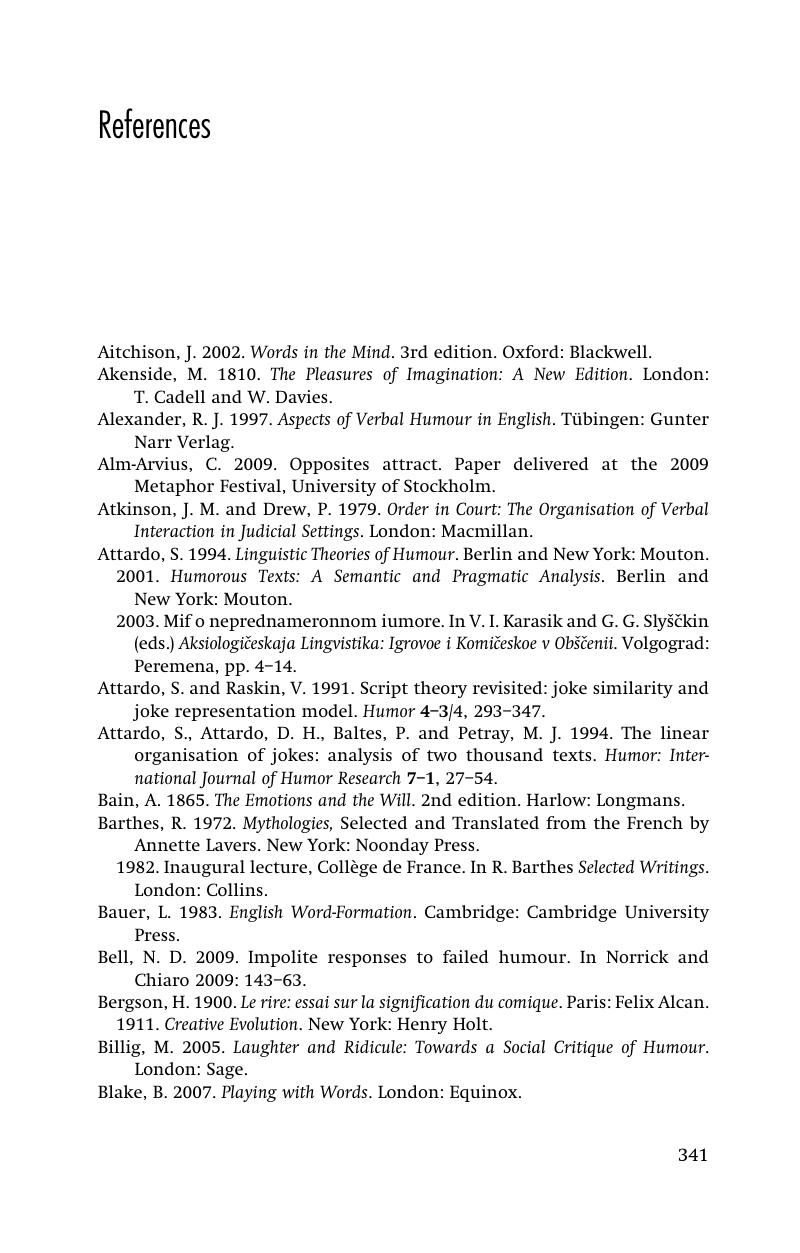Book contents
- Frontmatter
- Contents
- Figures
- Tables
- Illustrations
- Acknowledgements
- Typographical conventions
- 1 Introduction
- 2 Meaning in the language system: aspects of form and meaning
- 3 Semantics and conceptual meaning of grammar
- 4 Semantics and the conceptual meaning of lexis
- 5 Personal, social and affective meanings
- 6 Textual meaning and genre
- 7 Metaphor and figures of speech
- 8 Pragmatics: reference and speech acts
- 9 Pragmatics: co-operation and politeness
- 10 Relevance Theory, schemas and deductive inference
- 11 Lexical priming: information, collocation, predictability and humour
- Glossary
- Notes
- References
- Index
- References
References
Published online by Cambridge University Press: 05 June 2012
- Frontmatter
- Contents
- Figures
- Tables
- Illustrations
- Acknowledgements
- Typographical conventions
- 1 Introduction
- 2 Meaning in the language system: aspects of form and meaning
- 3 Semantics and conceptual meaning of grammar
- 4 Semantics and the conceptual meaning of lexis
- 5 Personal, social and affective meanings
- 6 Textual meaning and genre
- 7 Metaphor and figures of speech
- 8 Pragmatics: reference and speech acts
- 9 Pragmatics: co-operation and politeness
- 10 Relevance Theory, schemas and deductive inference
- 11 Lexical priming: information, collocation, predictability and humour
- Glossary
- Notes
- References
- Index
- References
Summary

- Type
- Chapter
- Information
- Meaning and Humour , pp. 341 - 349Publisher: Cambridge University PressPrint publication year: 2012



